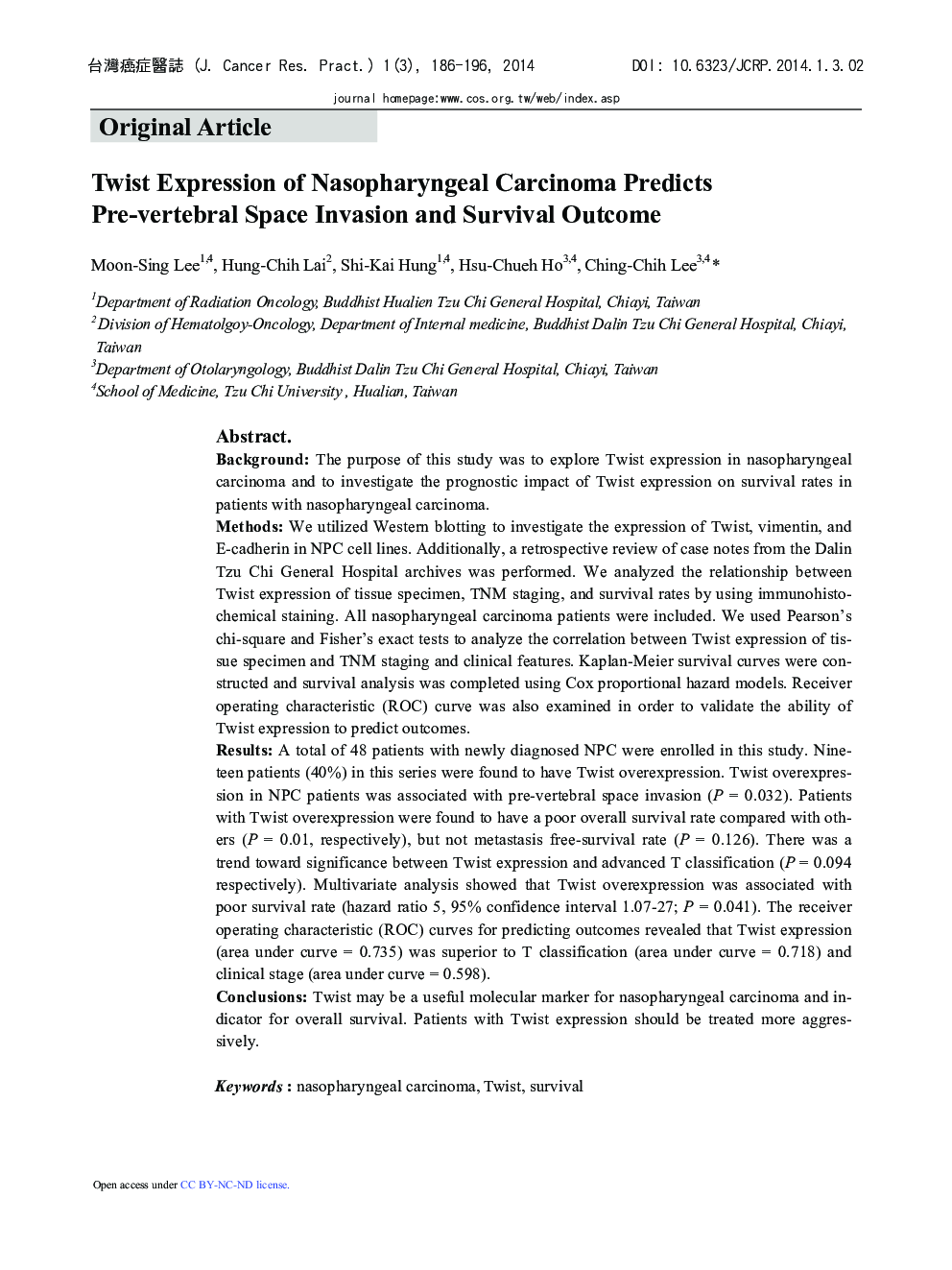| Article ID | Journal | Published Year | Pages | File Type |
|---|---|---|---|---|
| 3988823 | Journal of Cancer Research and Practice | 2014 | 11 Pages |
BackgroundThe purpose of this study was to explore Twist expression in nasopharyngeal carcinoma and to investigate the prognostic impact of Twist expression on survival rates in patients with nasopharyngeal carcinoma.MethodsWe utilized Western blotting to investigate the expression of Twist, vimentin, and E-cadherin in NPC cell lines. Additionally, a retrospective review of case notes from the Dalin Tzu Chi General Hospital archives was performed. We analyzed the relationship between Twist expression of tissue specimen, TNM staging, and survival rates by using immunohistochemical staining. All nasopharyngeal carcinoma patients were included. We used Pearson's chi-square and Fisher's exact tests to analyze the correlation between Twist expression of tissue specimen and TNM staging and clinical features. Kaplan-Meier survival curves were constructed and survival analysis was completed using Cox proportional hazard models. Receiver operating characteristic (ROC) curve was also examined in order to validate the ability of Twist expression to predict outcomes.ResultsA total of 48 patients with newly diagnosed NPC were enrolled in this study. Nineteen patients (40%) in this series were found to have Twist overexpression. Twist overexpression in NPC patients was associated with pre-vertebral space invasion (P = 0.032). Patients with Twist overexpression were found to have a poor overall survival rate compared with others (P = 0.01, respectively), but not metastasis free-survival rate (P = 0.126). There was a trend toward significance between Twist expression and advanced T classification (P = 0.094 respectively). Multivariate analysis showed that Twist overexpression was associated with poor survival rate (hazard ratio 5, 95% confidence interval 1.07-27; P = 0.041). The receiver operating characteristic (ROC) curves for predicting outcomes revealed that Twist expression (area under curve = 0.735) was superior to T classification (area under curve = 0.718) and clinical stage (area under curve = 0.598).ConclusionsTwist may be a useful molecular marker for nasopharyngeal carcinoma and indicator for overall survival. Patients with Twist expression should be treated more aggressively.
